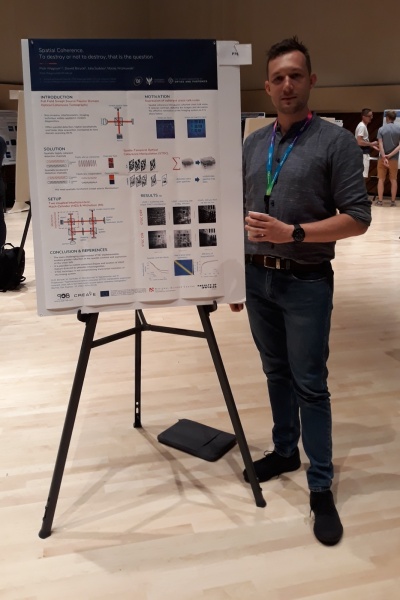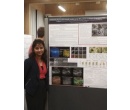The Siegman International School on Lasers
Mounika Rapolu and Piotr Węgrzyn, members of the POB team took part in the Siegman International School on Lasers at the University of Rochester, Rochester, New York United States. The Siegman International School on Lasers is a one-week-long program that exposes students to in-depth learning of lasers and their applications from internationally recognized academic and industry leaders in the field. The selection was limited to 100 graduate students from all over the world for the program to learn from pioneering laser researchers and experts from leading laser companies, highly-regarded professors, and fellow students. Mounika Rapolu had an opportunity to present her own research in form of a poster entitled “Contrast enhancement in optical coherence angiography for brain imaging”, which had provided an invaluable experience to interact and discuss the experts from the laser field and in building exposure for my work. Piotr Węgrzyn presented the scientific poster “Spatial Coherence. To destroy or not to destroy – that is the question”.
The program of this School consisted of series of lecture, the session about career development and social events to interact and the school gave the opportunity to widen the field of knowledge as it consisted of a variety of topics, ranging from lasers, biophotonics, and optical fibers to attosecond physics and high power laser. It was an opportunity to attend the lecture by Ian Walmsley, Imperial College London, the United Kingdom who was the pioneer to measure the ultrafast laser pulse width using Spectral Phase Interferometry for Direct Electric-field Reconstruction (SPIDER) technique and lecture on Femtosecond Molecular Fieldoscopy and Its Enabling Laser Technology by Hanieh Fattahi, Max Plank Institut fur Quantenoptik, Germany.
Dates
26 Jul.- 4 Aug. 2019
Location
University of Rochester, New York United States
Participant
Mounika Rapolu
Piotr Węgrzyn
Organizer
OSA Foundation




